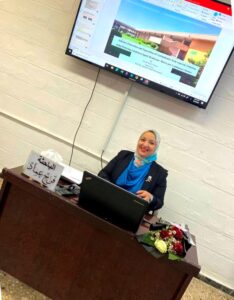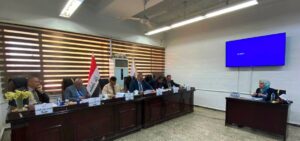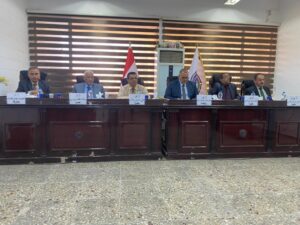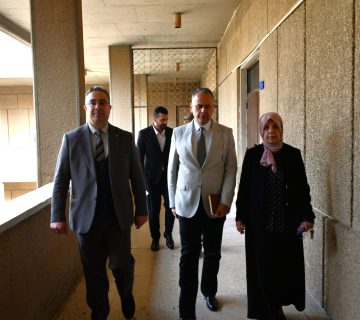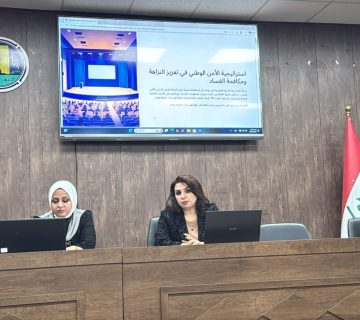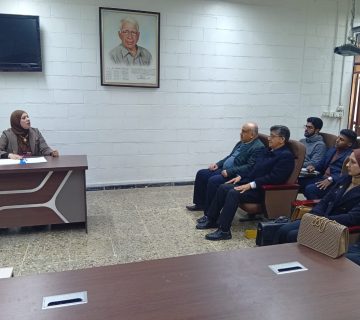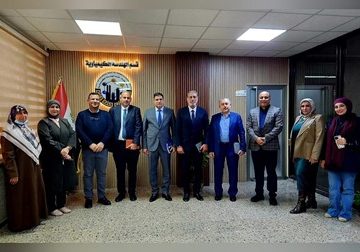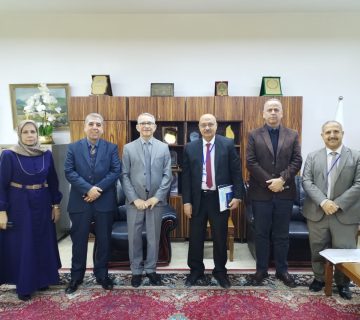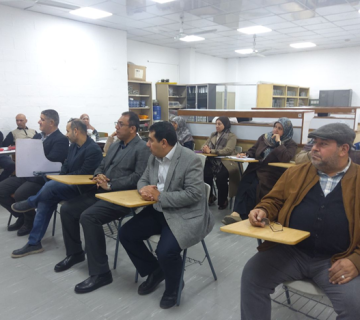Environmental Engineering Department at the College of Engineering, University of Baghdad, hel PhD dissertation examination on Wednesday 26\4\2023 titled:
” Selective extraction and separation of toxic contaminants from aqueous solution using Pickering emulsion liquid membrane: Batch and continuous studies”
By the student Farah Emad Niamat and supervised by Prof. Dr Ahmed Abd Mohammed. The examination committee consisted of Prof. Dr. Mohaned Jasim Mohammed Ridha as Chairman, and the membership of Prof. Dr. Khalid Khazal Hummadi, Prof. Dr. Ali Hussein Abbar, Assist. Prof. Dr. Khalid Miklef Musa, and Assist. Prof. Dr. Ali Omran Muhsin. After conducting the public discussion and listening to the student’s defense, the dissertation was accepted. It was summarized as follows:
A common pathway of pesticides is dissolution-transport from soil and plant surfaces into water run-off or groundwater, consequently, an occurrence of water resources contamination arises, posing a risk of chronic toxicity and in some cases acute toxicity for humans. Because of the high concentration and recalcitrance of pesticides in water and wastewater, a need has arisen to find a suitable treatment method for the removal of pesticides. As a cost-effective process, the emulsion liquid membrane technology has become a favorable alternative to the usual practices currently employed for water and wastewater treatment where both extraction and stripping occur during a single stage, leading to the simultaneous purification and concentration of the solute for possible reuse. The effectiveness of extraction and removal of lambda-cyhalothrin (pyrethroid pesticides), and Chlorpyrifos (organophosphate insecticide) from aqueous solutions via emulsion liquid membrane (ELM) and Pickering emulsion liquid membrane (PELM) was investigated and compared accordingly. For ELM, the water-in-oil emulsion consisted of n-hexane as a diluent, stabilized by a surfactant (Span 80), and HCl as the internal phase. While for PELM, the impact of adding different percentages of nanomaterial (modified Fe3O4 nanoparticles) to the previously mentioned emulsion was investigated. A number of factors affecting the extraction, stripping efficiency, and emulsion breakage were investigated, some of these factors include homogenizer speed, emulsification time, nanoparticle concentration, surfactant concentration, HCL concentration, mixing speed, contact time, external to emulsion phase volume ratio, and internal to membrane phase volume ratio. Under optimal operating conditions, for Lambda-cyhalothrin, the highest extraction and stripping efficiencies for ELM were 93.06% and 94.7% respectively. In the case of PELM, extraction and stripping efficiencies were 95.9% and 98.4% respectively. While for Chlorpyrifos, extraction and stripping efficiencies for ELM were 98.1% and 94.7% respectively, and 99.7% and 96.79% for PELM respectively. These results proved that PELM is more efficient than traditional ELM. Membrane materials and nanoparticles were recycled several times after extraction maintaining a high degree of extraction efficiency. Estimating values of mass transfer coefficients in the case of ELM: 2.389 × 10-7 m/s for LCT; and 3.89 ×10-9 m/s for CP. While in the case of PELM: 5.29 × 10-7 m/s and 4.16 × 10-9 m/s for LCT and CP, respectively.
